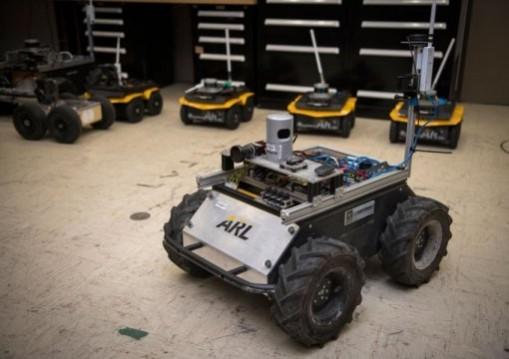
Armed conflicts will hopefully end costing many lives in the future.
The United States Army Research Laboratory (ARL) and the Robotics Institute at Carnegie Mellon University came up with a revolutionary method to program robots to move around with less supervision. Introducing Clearpath Husky, the robot is designed by researchers Maggie Wigness and John Rogers to enable mobile robot platforms to assist human soldiers in the battlefield.
Presenting their research experiments at the Institute of Electrical and Electronics Engineers' International Conference on Robotics and Automation held in Brisbane, Wigness stressed that autonomous systems can make a great buddy to a soldier to reduce a human's exposure to dangers in the line of duty.
"If a robot acts as a teammate, tasks can be accomplished faster and more situational awareness can be obtained. Further, robot teammates can be used as an initial investigator for potentially dangerous scenarios, thereby keeping Soldiers further from harm."

Wigness said the learning process of the robot intelligence is fast, relying upon minimal human demonstrations, which is apt when missions call for quick changes. Part of the learning process is the robot's optical sensory perception of the terrain and the surrounding objects.
This way, the robot traverses paths fully aware of its environment, whether it is at the edge of the road or behind the buildings. Overall, its behavior is based solely on real-time scenarios.
Teaching robots to be more reliable teammates for soldiers #robots #mobilerobotplatforms #robotintelligence #NGCV #autonomoussystems #armyresearchlab #CarnegieMellon https://t.co/eByLBMVVzd pic.twitter.com/URxRbZrasR
— Innovation2 (@Innovation2) July 16, 2018
While there have been quite a few other researches with the same goal, ARL's model is specifically engineered to operate in the war zones where the situation is "highly unstructured" and "noisy" and dependent on a relatively little amount of data.
Is the military moving towards a time where robots become the warfighters in lieu of humans? According to Rogers, it is ultimately a huge leap to a future where weaponized robots will remove the risk to the soldier.
"The capability for the Next Generation Combat Vehicle to autonomously maneuver at optempo in the battlefield of the future will enable powerful new tactics while removing risk to the Soldier."
But for now, soldiers will have to wait until their robot buddies turn into full-fledged warriors.

















